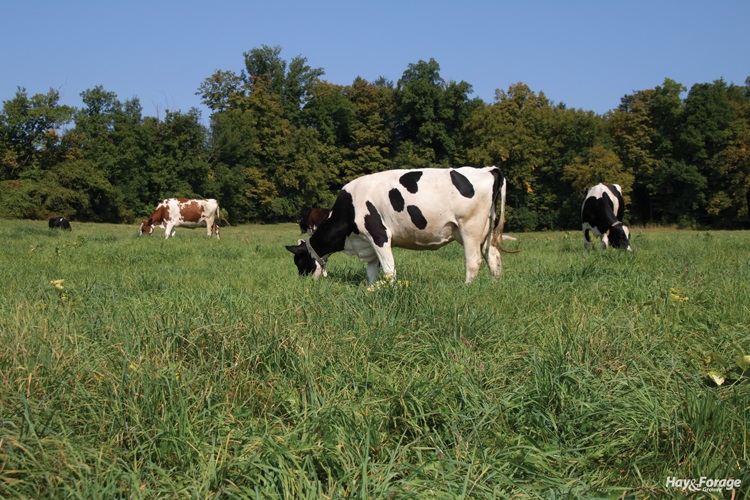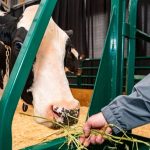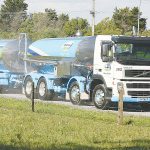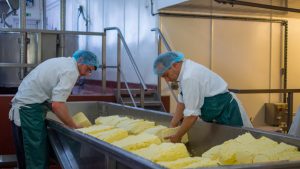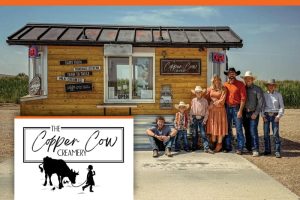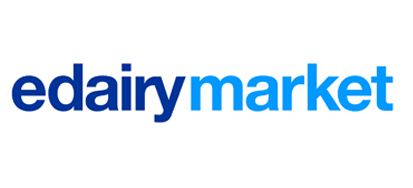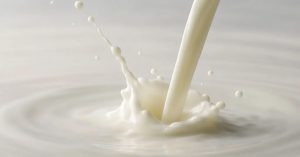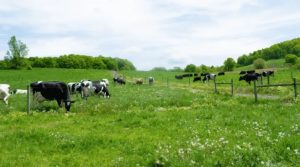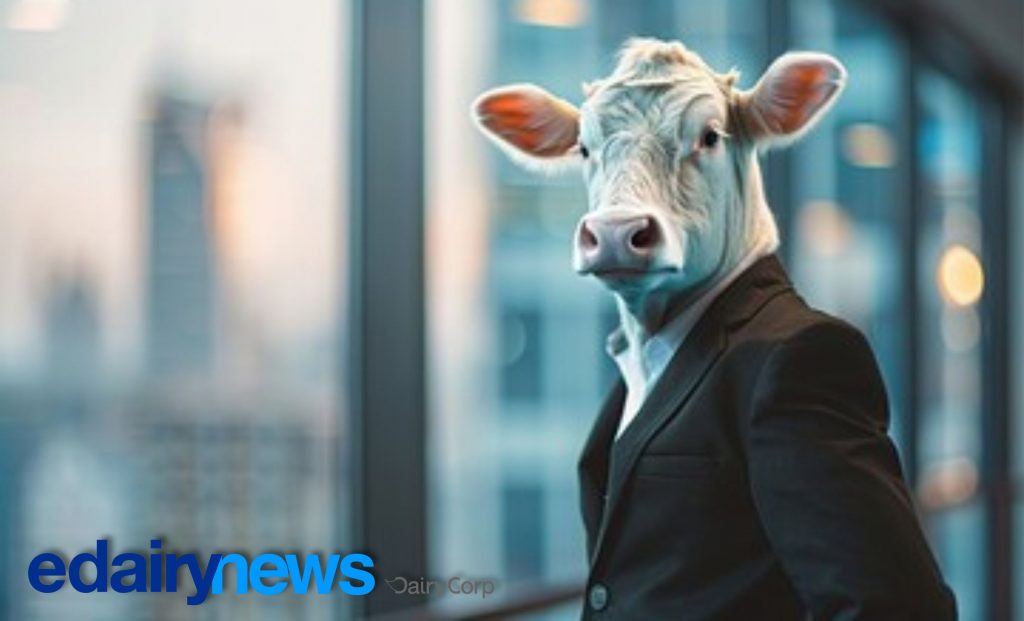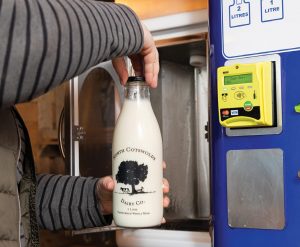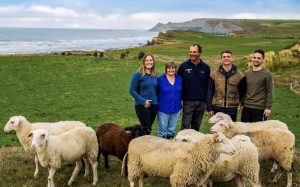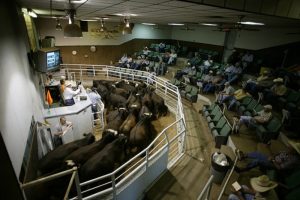
When John and Beth Haynes bought the family dairy from his parents in 1981, they probably didn’t anticipate that four decades later a pink and orange Dunkin’ Donuts sign would be within eyeshot of the milking barn. But sure enough, there it was.
As the couple planned to retire, they wanted to ensure their farm on the outskirts of Claremont, N.H., would continue to exist instead of being swallowed up by urban sprawl. In addition to putting a conservation easement on their land to protect it from commercial development, they proactively pursued a beginning farmer to take on the dairy as a turnkey business, which is how they met Baird Swift.
At the time, Swift worked for a heifer raiser but had his eye on establishing his own farm. Upon meeting the Hayneses, Swift soon started working on the dairy and moved to the farmstead with his family shortly after. He was intrigued by the organic grazing system and no-till farming the couple had been implementing since the 1970s. By milking cows twice a day and taking on harvest responsibilities, Swift sowed the seeds for the partnership the two parties have today.
That was five years ago, marking the start of their seven-year plan to transfer farm assets. By caring for cows and managing forage, Swift has paid for the majority of the herd and field equipment so far. In two more years, the men will begin the transfer of land ownership from the Hayneses to Swift. An incremental transition was the best way for them to minimize debt and ensure the passing of the torch was a smooth process.
As Swift acquires more authority, he has begun to button up some aspects of the operation. Managing pastures, securing more land, storing more feed, and shifting the milking schedule has trimmed the fat of farm expenses to boost margins on the organic dairy. In every decision to do something different, though, Swift maintains the sustainable principles that Haynes Dairy Farm was founded on years ago.
Pastures and hayfields
The pastures at the home farm are anchored in orchardgrass and clover with some reed canarygrass and timothy. Swift recently began frost seeding clover in a few of his fields, but for the most part, the grazing acres have been intensively managed and effectively maintained for multiple decades.
“We operate on all grass, no tillage, and with native species. I’m really not introducing anything; I’m not reinventing the wheel,” he said. “When John was in charge, he was clearing the land and improving the pastures so that all of our pastures can also be hayfields.”
An emphasis on no-till is attributed to the landscape of Swift’s eastern side of the Granite State. Tilling fields and seeding new forage would likely encourage erosion on the rolling hills and sandy loam soils.
Clearing the land, on the other hand, was a necessary step to clean up field perimeters and maximize available acreage that otherwise would have been surrounded by trees. With those improvements established, Swift can navigate fields more easily when he cuts hay. “I do take a first cutting, but the name of our game is to graze,” he said.
The grazing game, according to Swift, gets a quick start out of the gate when forage grows rapidly in the spring. He rotates cows to new paddocks several times a day to keep up with the flush of grass when the grazing season begins. Then, as the growth curve slows heading into the summer, he uses polywire fence to divide pastures into fourths and gives cows a quarter section after each milking. “When I set up the grass, I envision the cows need to eat five round bales of forage,” the dairyman said. “If I were to come mow that and rake it up, would I get five round bales? That is what I am asking myself every day.”
In the fall, slow forage growth isn’t as much of a limiting factor as freezing temperatures and snow. Swift said the first frost tends to fall around the middle of September, and by early November, underground water lines will be frozen. At that point, he relocates cows to the barn and feeds them baleage throughout the winter.
Bonus baleage acres
In addition to the home farm in Claremont, Swift has also formed an agreement with Carl Phitzer to make baleage on his 90 acres in Vermont. Those hayfields abut the backyards of large vacation homes in a small ski community nearly 40 miles north. Swift said he pursued this partnership on a whim. “I found it on a Craigslist ad,” he shrugged.
One downside of the deal, though, is that it takes Swift over an hour and a half to drive to the Vermont farm, negotiating the twists and turns of the mountain roads. He originally hired a custom harvester to bale hay there, but after crunching the numbers, he determined it would be cheaper to do it himself.
Last summer, Swift squared away first cutting in Claremont and waited until the grazing season was underway before tackling hay harvest in Vermont. Then, he drove back and forth between mowing, baling, and hauling hay to the home farm one load at a time where he wrapped bales and put them into storage. It may seem like a roundabout way to secure feed supplies, but for a beginning farmer who is left to his own devices, it’s worth it.
“John and Carl have taken me under their wings, but they haven’t given me anything. I’ve had to pay my own way; I’ve had to earn it,” Swift said. “I bought all of my equipment, I bought all of John’s cows, and I have been able to acquire the land that Carl has used his whole life.”
Even though these extra acres are exclusively used for baleage now, Swift would like to work them into his grazing rotation someday. In addition to cutting equipment costs by letting cows harvest grass themselves, Swift said doing so would create another outlet for manure.
A humble herd
Despite a forage-centric diet, Swift does offer his 60-cow milking herd organic ground corn to incentivize their walk from the pasture to the parlor and to supplement their energy intake. At one point, he experimented with a 100% grass-fed diet, but without easy access to a target market, it wasn’t a profitable practice.
“Historically, the cows have never eaten a lot of grain, and when I bought them, I went to no grain. For two years, they just got hay,” Swift explained. “But I’m not getting a premium for grass-fed milk because that truck won’t come out here to pick me up. I’ve gone back to feeding ground corn again to make sure I’m not missing out on energy, so I’m organic, but I’m not completely grass-fed.”
The ground corn comes at a cost that Swift often contemplates and compares against the cost of feeding more hay. However, low commodity prices have kept this expense at an affordable level, and with a purchase of ground corn, his supplier offers discounts for other ingredients he buys in bulk for weaned calves. As much as he dislikes paying a grain bill, he admits it is a good management tool.
Another tool to optimize milk production has been the introduction of Norwegian Red cows into the mostly Holstein herd. Swift said these cows maintain body condition on grass and respond to a high-forage diet better than more conventional dairy breeds. With that said, milk production in an organic system will never match that of a conventional one.
Opting for once-a-day milking when he took over the farm has also tugged on average production per cow. Even so, Swift said the decisions to let go of existing employees and establish a more simplified system were partly made for personal reasons, but also to streamline the economics of scale at the small dairy.
“I don’t like telling people what to do — the boss role just didn’t work,” Swift admitted. “When I bought the cows, there were four full-time people managing the same number of cows that I’m milking now. Granted, the milk volume was different. But I’m really pushing for simplicity with haying, with my cows, and by bringing them home once a day.”
For these reasons, he has no intention of expanding the herd, nor does he intend to diversify his operation. While many other New Hampshire farmers tap into local markets and seek out direct-to-consumer sales, Swift prefers the routine of selling organic milk on the truck as a commodity. Even with the pink and orange Dunkin’ Donuts sign within eyeshot of his milking barn, he appreciates the freedom and privacy that the farming lifestyle has afforded him and his family.
You can now read the most important #news on #eDairyNews #Whatsapp channels!!!
🇺🇸 eDairy News INGLÊS: https://whatsapp.com/channel/0029VaKsjzGDTkJyIN6hcP1K
